Supernova: The brief, bright life and death of the Harley V-4 Nova
Harley-Davidson has been trying to broaden its appeal of late, with a new family of liquid-cooled V-twins including the Pan America adventure bike.
Cynics will tell you that Harley should have revamped its range decades ago, rather than sticking to its traditional V-twins for so long. What’s less well-known is that the firm did develop a promising V-4 way back in the early 1980s, only to scrap the project.
The Nova was top-secret back then but was belatedly revealed more than 25 years later, when a prototype was displayed in the factory’s new museum in Milwaukee, Wisconsin.
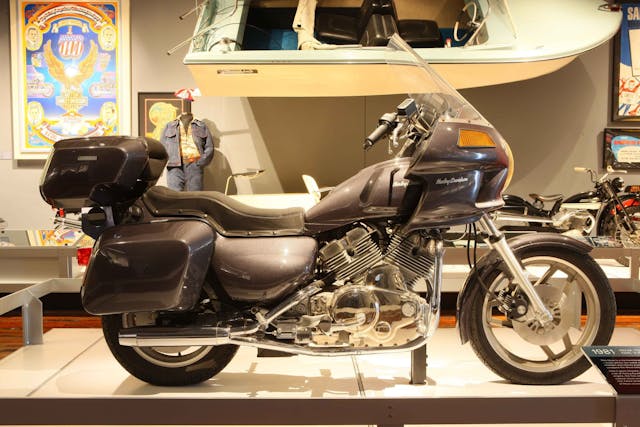
At first glance, the big, grey, half-faired Nova looked like just another member of Harley’s V-twin touring family. But its engine, developed in conjunction with Porsche, was an 800-cc, liquid-cooled V-4 with twin overhead camshafts and cylinders spaced at 60 degrees rather than the familiar 45.
In 1981, when the Nova was due to be launched, it would have predated Honda’s successful VF and VFR families of V-4s, and would have been as advanced as any bike on the market. In fact, Harley planned a six-strong family of Novas, ranging from 400-cc V-twin and 1000-cc V-4 to a 1500-cc V-6. All would have featured many shared parts under a modular format similar to the one that Triumph would adopt on its rebirth a decade later.

The Nova project was hatched in secret meetings that Harley’s top management and engineers, led by vice president Jeffrey Bleustein, held in the late 1970s, to establish a plan for the following decade. They decided to invest in two directions: a family of bikes powered by an updated, air-cooled V-twin engine, eventually known as the Evolution; and an all-new, high-performance line with a more advanced, liquid-cooled powerplant—the Nova.
“At the time, we thought Harley needed a new range, to complement rather than to replace the V-twins,” recalled Mike Hillman, the English-born engineer who was chosen to lead the Nova project. “Emissions and noise regulations were getting tighter and we weren’t sure we could make the air-cooled engine meet them. The Japanese manufacturers were swamping the market with different products, and we wanted something to compete.”
Harley’s parent company AMF (American Machine and Foundry) was keen to support the ambitious project, but developing such an advanced, all-new engine alongside the updated V-twin would have stretched R&D resources too thin. “We looked at quite a few suppliers and went to three in particular: AVL in Austria, Riccardo in England, and Porsche. We chose Porsche partly because they had experience of production as well as development,” Hillman said.
A 60-degree Vee angle was chosen, partly because Hillman, who before joining Harley had designed a Formula 1 race car for Brabham in the 1960s, wanted to use the powerplant as a stressed member of the chassis. A contra-rotating balancer shaft allowed the unit to be solidly mounted to the pressed-steel backbone frame.
The engine’s modular design retained a common stroke of 58 mm and used alternative bore sizes of 66 and 74mm to produce individual cylinder capacities of 200 or 250 cc. This gave V-twins of 400 and 500 cc; V-4s of 800 and 1000 cc; and V-6s of 1200 and 1500 cc.

“We started with the 800, which might not seem the most logical choice, but we wanted to get into the 750cc class,” said Hillman. The relatively short stroke allowed a redline at 9500 rpm. Carburetors were used initially, although fuel-injected engines were also planned.
Power output was about 100 hp per liter, which would have given the 800-cc Nova 80 hp – competitive with Honda’s first V-4, the VF750S, which was launched in 1982 with a claimed 79 hp. Harley considered using shaft final drive, before opting for a toothed belt.
Following pressure from styling chief Willie G. Davidson, who wanted a clean look, there was no place in front of the V-4 unit for a conventional radiator. Instead the rad was placed almost horizontally under the seat. A fan drew cooling air through the radiator from the dummy tank, which was in fact a large airbox and was itself fed via two large scoops at its front. The fuel tank was also under the seat, straddling the radiator; its cap was in the tailpiece.
All this resulted in bulbous side panels but a low center of gravity. Even so, the naked Nova had a fairly lean, sporty look, despite its raised bars and stepped seat. Suspension was by conventional telescopic forks and twin shocks.
Development through 1979 and 1980 went well, with Hillman leading a 15-strong team in Milwaukee, and 15 more engineers working at Porsche. More than a dozen prototypes were built, all with 800 cc capacity—some naked and others with bodywork.
Testing took place both in the States and in Germany. Harley had previously used public roads for reliability testing, but the need for secrecy led the company to set up a private facility in Talladega, Alabama.

The Nova was certainly promising, combining 120-mph performance with reasonably light weight and, according to Hillman, excellent handling. “It was very nice to ride because the frame was so stiff. The chassis drove fabulously and the brakes worked very well. I rode the bike but mostly it was the test riders’ job. We had to keep the numbers down due to the project’s secrecy. There was one exposé when someone took photos in Germany, which were published by Motorrad magazine. But not much information escaped.”
The Nova project seemed to be moving steadily toward its projected launch date of mid-1981—initially in unfaired 800-cc form, to be followed soon after by the 1000-cc version. Touring, sport, and even super-sport V-4s were planned for future years, followed by the V-twin and V-6 models.
Sadly, for all those who would have loved to see high-performance Harleys emerge to take on the Japanese, it didn’t happen. The year 1981 turned out to be a landmark in Harley-Davidson history, thanks not to a dramatic new model but to the management buyout from AMF that kick-started the marque’s spectacular revival.
President Vaughn Beals and other bosses of the reborn firm, which was heavily in debt, had to choose between continuing to develop the Evolution V-twin or producing the Nova. Inevitably, the safer option of the aircooled V-twin won. The Nova project was abandoned, after several years of development, more than $10 million of investment, and tens of thousands of miles of testing.
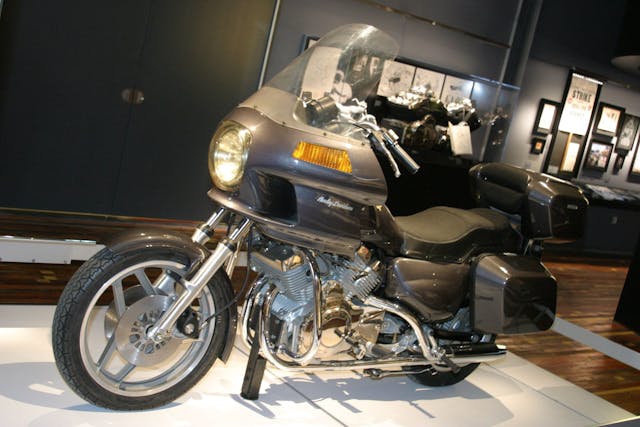
Even then the Nova refused to die.
“In ’82, the company made its first-ever financial loss, but in spite of that the management still siphoned off a chunk of money to keep the Nova going,” recalled Hillman, who joined Beals in making presentations to firms in the United States and abroad, in a search for financial support for the project. “In fact, we found a place to build it, in Italy. But strategically it didn’t make sense. Then bike sales fell towards the late ’80s. By then it was less competitive anyway.”
Finally, Harley execs made the tough decision to abandon the Nova, and the prototypes were either scrapped or put into Harley’s warehouse. According to factory insiders at the Harley-Davidson Museum, five bikes remained, of which two were runners. The display bike is a non-runner incorporating some parts made from wood.
Hillman went on to enjoy a successful career at Harley, rising to vice president and using his Nova connections to help set up the deal that saw Porsche develop the liquid-cooled V-twin engine for Harley’s V-Rod, released in 2001.
“It was a shame Nova didn’t make it, but you have to move on,” he said. “I’d like to think it would have augmented the V-twins. But the investment Harley made in getting the factories to work properly at that time, and the focus on improved quality with the Evolution models, were vital to the company’s growth. Scrapping Nova was undoubtedly the right decision.”
***
Check out the Hagerty Media homepage so you don’t miss a single story, or better yet, bookmark it. To get our best stories delivered right to your inbox, subscribe to our newsletters.
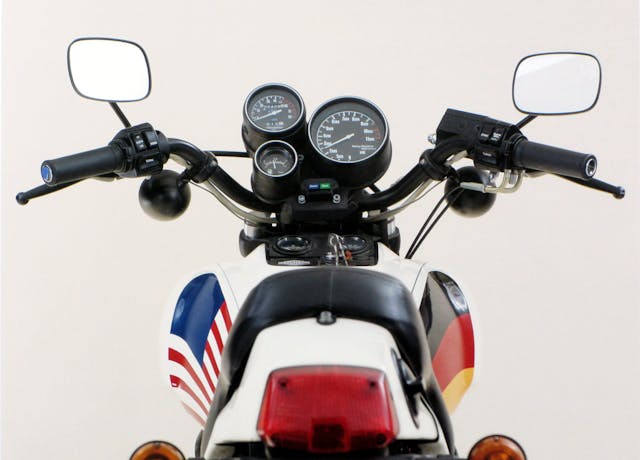
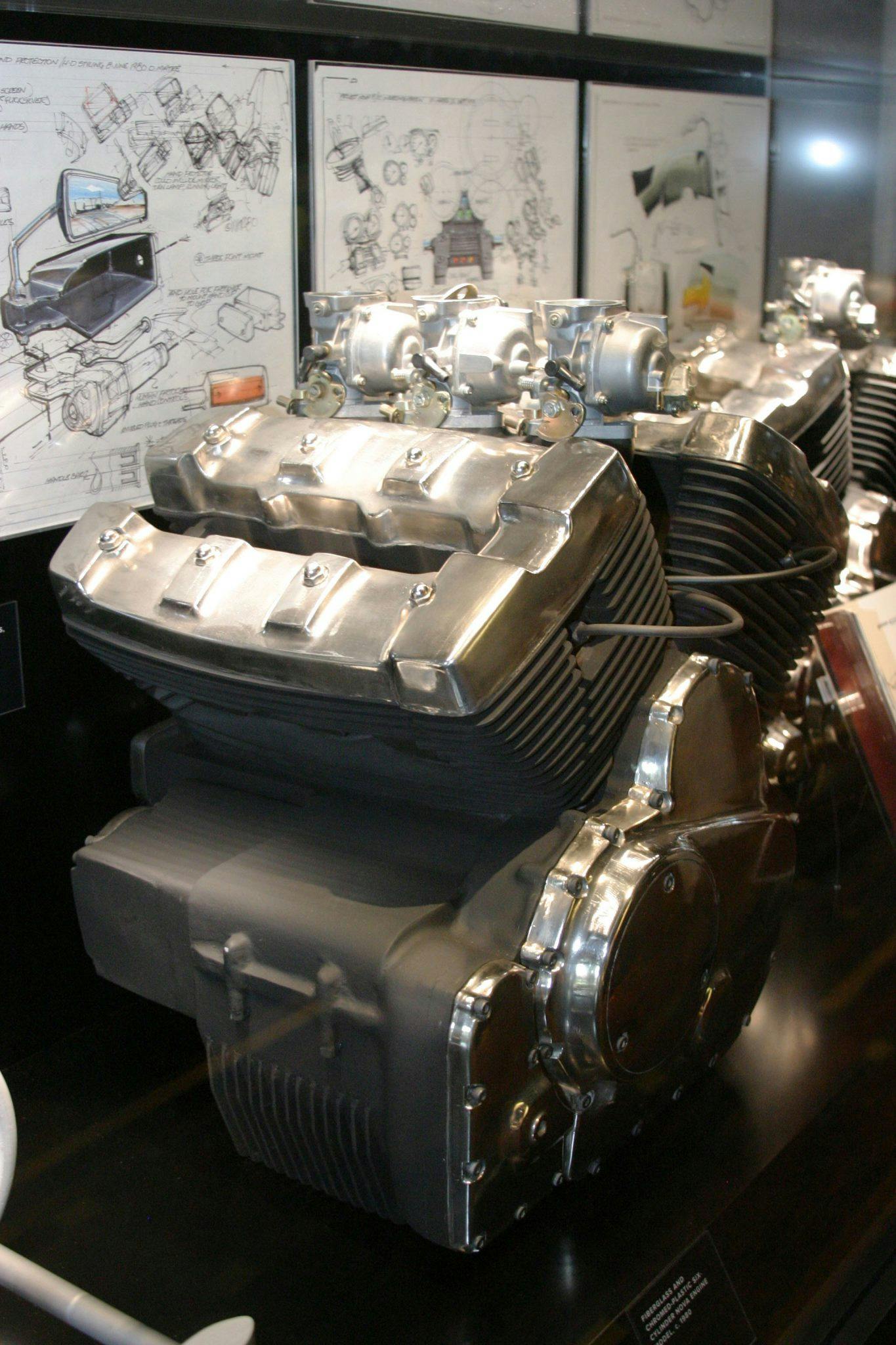
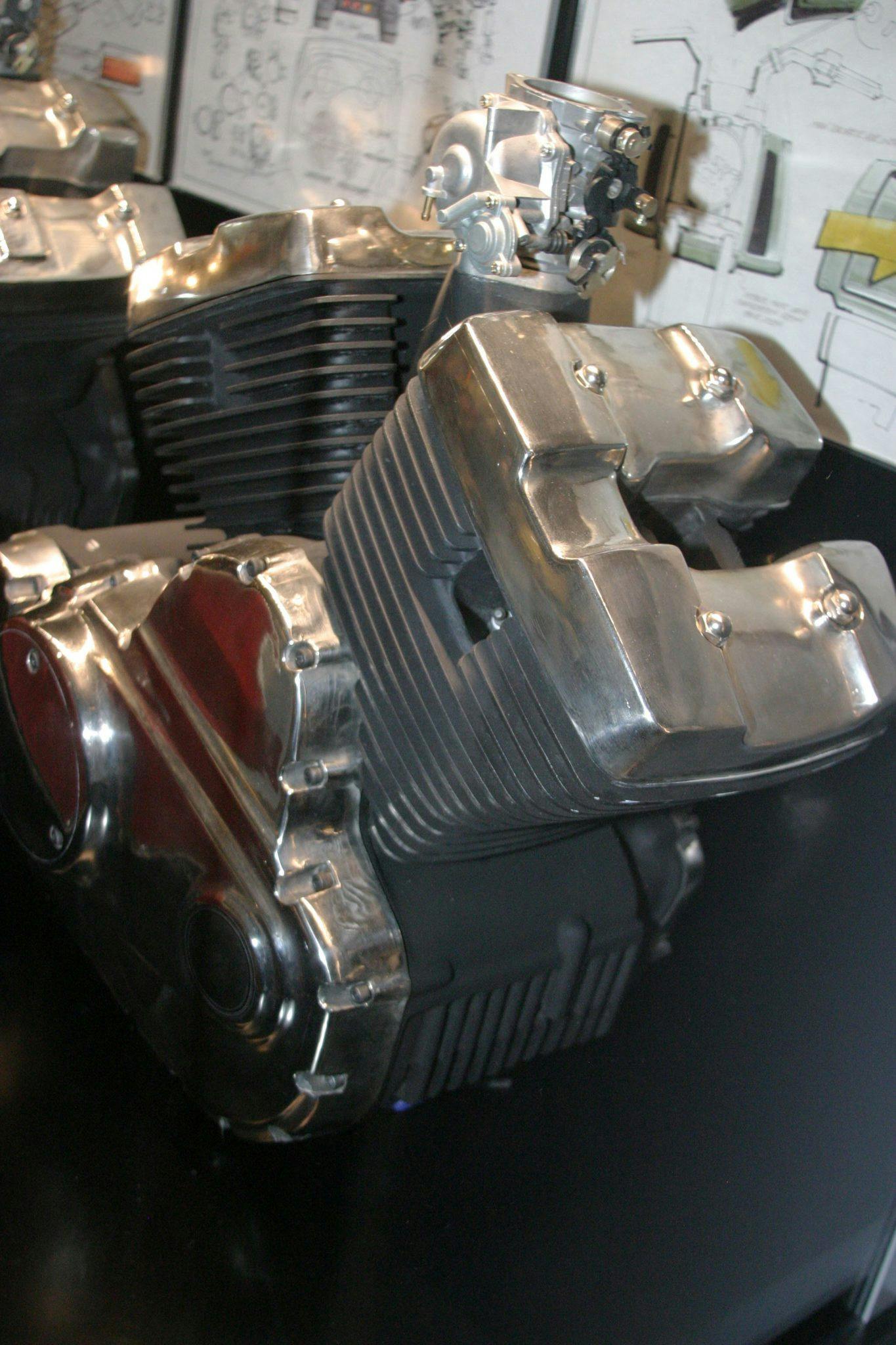
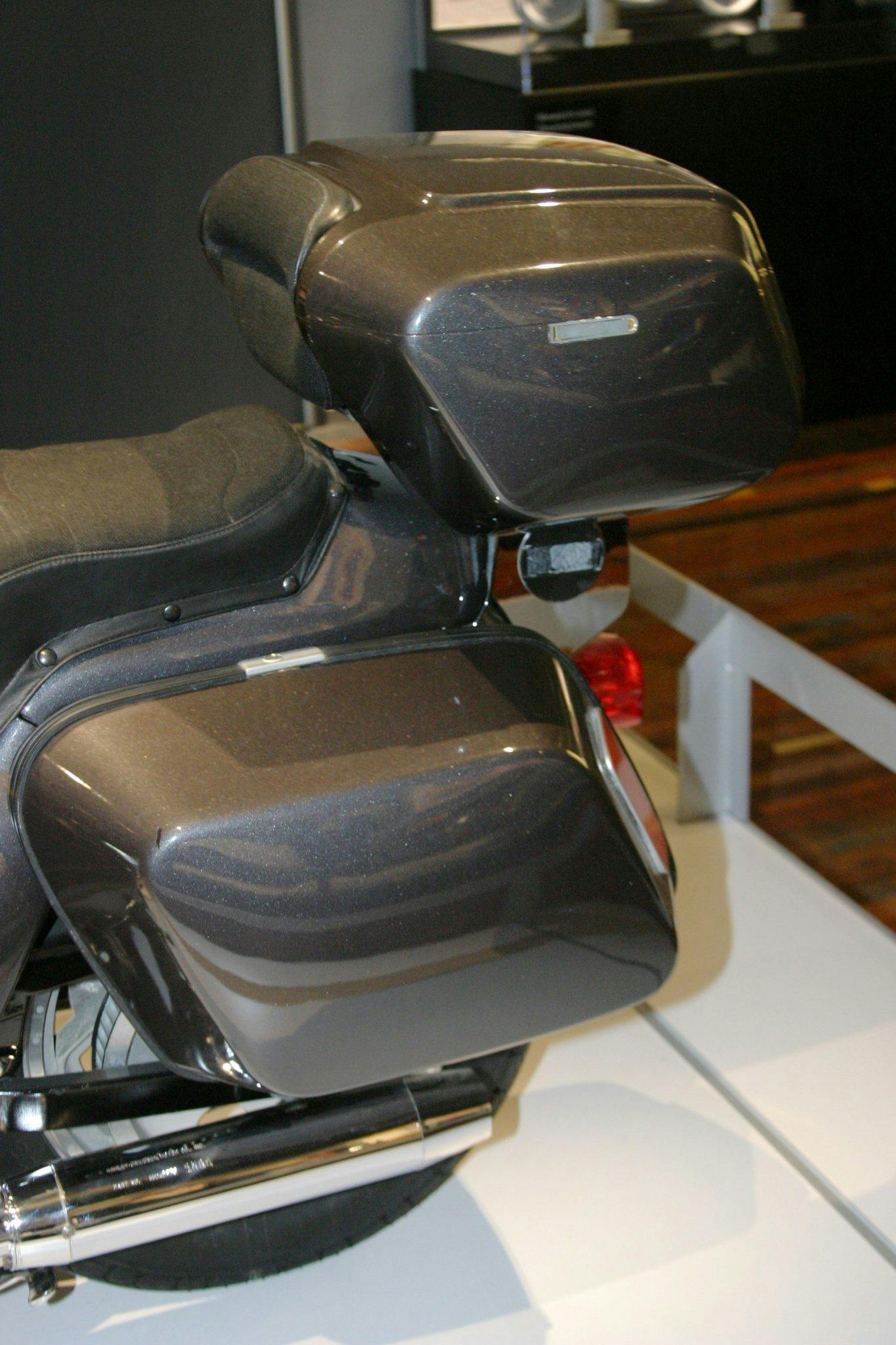


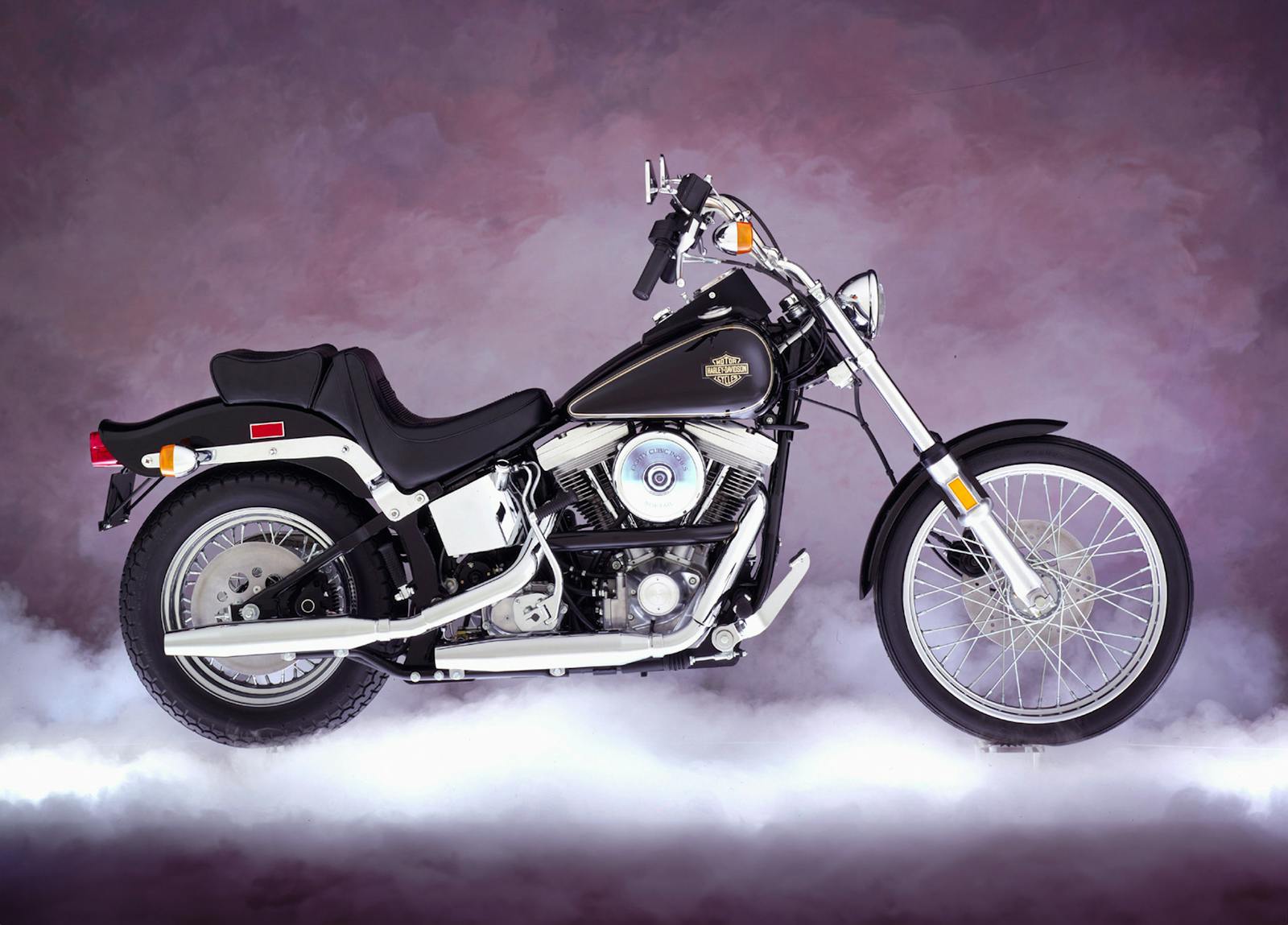
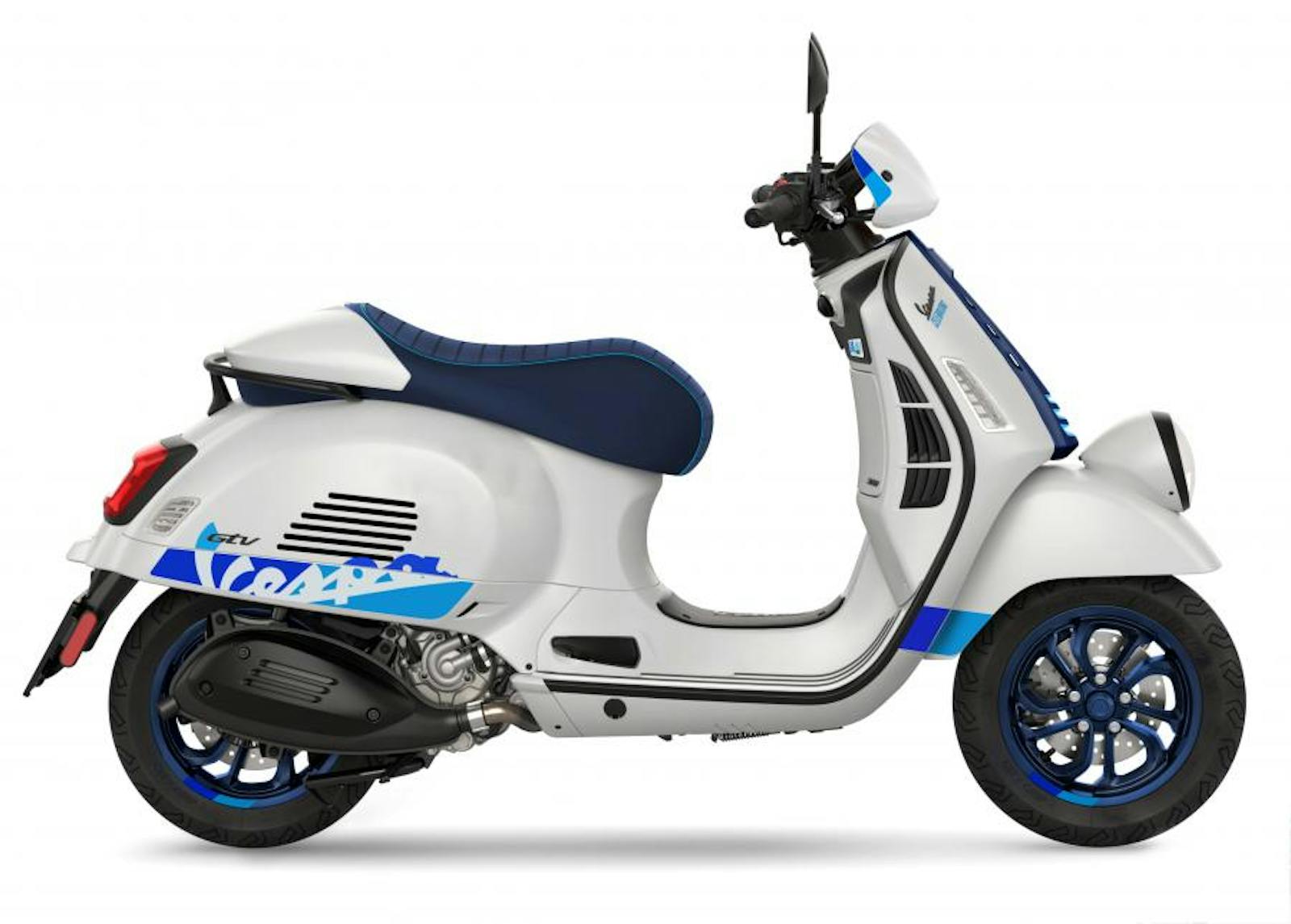
Some real interesting concepts on this bike. Not the types of stretching the envelope that one would expect of Harley. I would have loved to see them produced. Seems like it might have been a sweet ride.
Was an aluminum casting supplier to Harley late 80’s when the Evo engine was getting going (we made their cylinder heads). No one ever talked about the Nova-never heard about it until today. Did buy a new bike in 1980 and picked Suzuki over Harley. Hagerty insures the GS850G today. Frankly then Harley quality was suspect. And I’m being kind!
Hmmmm the engine has a likeness to the VRSC V-Rod. And Harley Davidson V-Twins have had changes to then that adapted to style and size differences thru new bigger models for the power known in a Harley Davidson. The street 750 and new sportster models and tge Pan America have fulfilled their mission statements about appealing to new riders. Personally ive owned 6 Harleys
I had always heard that this V4 ended up in the Yamaha V Max after Harley gave up on it. No mention of that, maybe not the same engine?
Absolutely not used in Yamaha. Although Yamaha “stole” the styling cue of the air ducts
I think this would have been an interesting motorcyle.
Now do an article on the 3 cyl harley done as a project by Jim feuling which harley abandoned then he produced a very few ..air cooled and exceeded the hp they were looking for
I’ve read a few pieces on Feuling and he was certainly an interesting character.
A profile of his life and times would be good reading.
Interesting similarities to what would later become the V-Rod in 2001. I was a sales person at a Harley store in Ventura County, CA. We were never told about the Nova design, but I always wondered how such a radical departure from traditional Harley engineering (the V-Rod) came to be. The ownership change from AMF, which had been a disaster, back to the family of Harley-Davidson origins (Willie G., etc.) saved the company. Had it been in a better financial position after they got rid of AMF, the Nova might’ve been a good future product. The Harley buyer has evolved over the years (not as much of an old white guy bike); the Nova might be a better fit now.
Although the V-Rod design team members were too young to have been involved with NOVA, the V-Rod team spent a lot of time analyzing the concepts presented in NOVA. The fuel tank under the seat, engine as a structural member of the chassis and 60degree engine configuartion to improve balance factors were great ideas shared by both vehicles.
Hmmm. Airbox where the gas tank should be? Gas tank under the seat? Porche designed? Wanting the radiator in the front? This sounds remarkably familiar.
The Revolution motor found in the V-Rod descended from the VR1000 super bike motor, but there are some similarities here (liquid cooling, 60 degree vee angle, DOHC).
Interesting that the article didn’t mention all was not lost- the fairing and the saddlebags from the Nova were used on the FXRT.
Where are there more photos of the bike without the fairing in the lede? I’ve never seen a photo of it before.
I’m sure I read about this in Cycle World in the early 90s. It shows a lot of vision for a normally staid company. Styling seems like a cross between a an FXRT and a Gold Wing and I wonder if that fairing was reused for the FXRT. Vaughn Beals was probably right though, Harley’s are like Morgans, living fossils and the customers like it that way. Look at the sales of Springer Soft Tails versus V Rods.
I had a 1983 FXRT with a shovelhead, I seem to recall reading only about 35 of the 83’s were shovels as the Evo’s were introduced during that production run. Another machine I should have kept…
My brother, Greg Nelson, was a Harley development engineer for a few years (Cafe Racer), and also collaborated with engine designer/builder Ron Hoettels (SESCO) to develop the SESCO/Suzuki V-8 which Greg then used in his midget to win the Badger Midget Racing Association championship in 1983, I think it was. A job change took him to California where he continued to race midgets in the Bay area for other owners, having sold his car before leaving Wisconsin. He had a Harley FXR for fun rides, but his mind kept thinking back to the Suzuki-V8 project and how that experience could be applied to the V-Twin EVO. It wasn’t long before he had a V-4 tucked into the frame of the FXR and was taking Sunday rides with other local riders. The installation was so compact and subtle that it took a while for people to realize that the bike was packing four cylinders. Almost immediately, the question arose, “can you build one of those for me?”. After some design refinement and a “not interested” response from Harley-Davidson, he obtained a patent and trademark for the V-Quad engine. He then set-up his home shop and ordered parts to build customer engines, just as the recession of 2007-2009 set in killing the custom bike business. A handful of engines were sold, going into “high-profile” builds, including Orange County Choppers Intel bike to promote the Quad-Core processor. A twin-turbo version was featured in the build of “America’s Most Beautiful Motorcycle 2006” and a V-Quad powered bike holds records at Bonneville (think 180+mph unfaired). For more information and pictures, you can Google V-Quad engine, V-quad motorcycle or visit https://thekneeslider.com/v-quad-bagger-from-nelson-engineering/ . Greg’s last build was a complete V-Quad bike, “Four Play”, which is now for sale to raise money for his next Bonneville adventure, a Fiat 500 coupe powered by a (you guessed it) 4-cylinder version Chevrolet LS engine. To see this beautiful bike, go to: https://www.strokersonline.com/Motorcycles-V-QUAD-V-QUAD-2009-Dallas-TX-8435bbb7-8c77-41b1-bd32-ae1e0109c959
As an item of interest, the Suzuki V-8 was brought back to life by Greg and Ron in 2012, installed in a Bonneville T-roadster (G/MRFR) and set a land speed record of 162.553mph; 2-liters on methanol. I had the great honor of being their crew! For a picture of the engine as used in the midget, go to: https://thekneeslider.com/sesco-air-and-oil-cooled-suzuki-v8-engines/
Not mentioned here, the “other” water cooled Harley, the VR1000 Superbike. Racing against a tough crowd, it struggled, and was canceled unceremoniously before the VRod VRSC was introduced. The early VR1000 development was at Jack Roush, but mostly done in-house.
What a museum HD are very beautiful motorcycles i didn’t expect that they have such a history like that even the classic now engines are very special and unique in sound!
i have owned my 1979 Superglide for 43 years now. I have no incentive at all to own a Harley with over head cams or fool infection. Never have, never will. I love simplicity, reliability and repairability and that beautifull v-twin sound, all of which I have had for 43 years and over 100,000 miles.😊😊😊😊😊😊
I agree on the simple easily repairable versions
I also am a Chuck!
Hmmm….